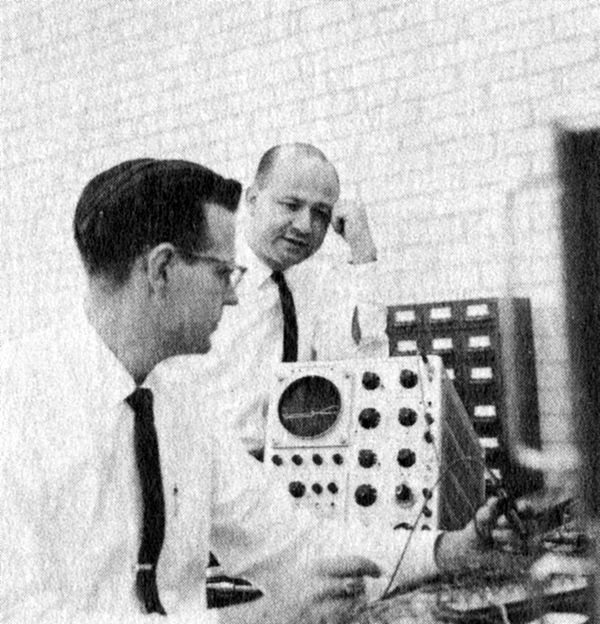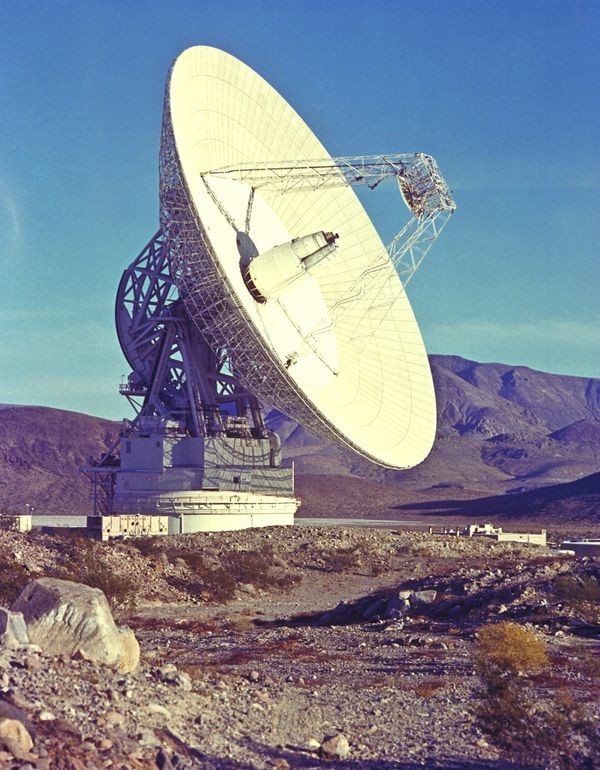Scientific Data Systems
SDS 920
SDS’s first two computers were almost identical. But the 910 sold for the jaw-dropping price of $48,000, compared to $89,000 for the 920, because it omitted multiply and divide instructions and had slower paper tape I/O equipment.
Scientific Data Systems
Max Palevsky and Robert Beck founded SDS in 1961 to make scientific computers. Their clever engineering brought better performance than the competition at lower cost.
In 1968 Xerox bought the company for over $900 million. But under new management the division lost money and shut down six years later.
Max Palevsky (standing) and Robert Beck, in the lab
Palevsky, the firm’s marketing and business leader, and Beck, its technical lead, worked together for more than 10 years before founding SDS.
View Artifact DetailEyeing Outer Space
How do you track and control an unmanned space probe? The Goldstone Observatory in California’s Mojave Desert used giant radio antennas.
But how do you keep the giant antennas, sitting on a moving planet, precisely pointed at a moving probe? With a computer of course—in this case the SDS-920.
Goldstone deep space antenna
With the help of modern computers, the 230-foot diameter Goldstone antenna can track a space probe 10 billion miles away. Communication with the probe takes 32 hours.
View Artifact Detail





